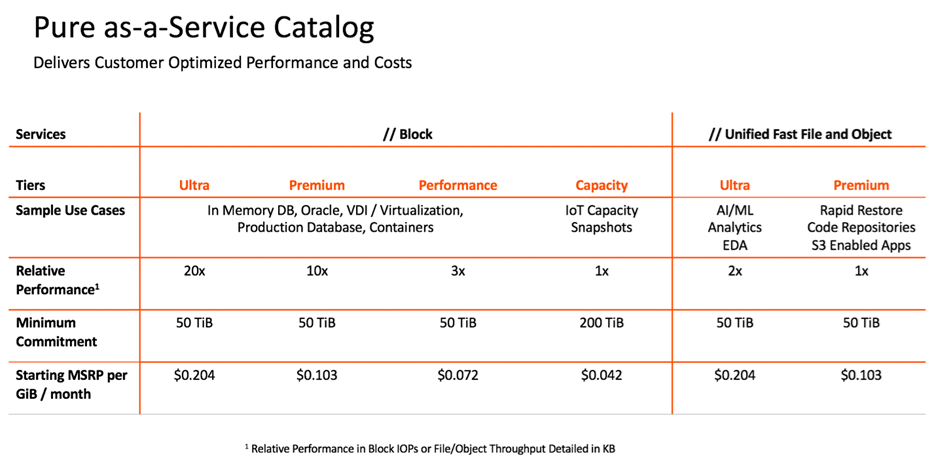Data Centre Software for Smarter Operations
Data
Data Centre Infrastructure News & Trends
Data Centre Operations: Optimising Infrastructure for Performance and Reliability
Data Centre Software for Smarter Operations
Data Centres
Infrastructure Management for Modern Data Centres
Scalable Network Attached Solutions for Modern Infrastructure
'Not all Micro Data centres are created equal'- Zella DC
Zella DC has recently beat out several global data heavy-weights to secure a multi-country deal with a leading US pharmaceutical group, proving that even the well-established IT infrastructure market is now ripe for disruption.
Recognising that fixed server room infrastructure is costly, inefficient and difficult to scale, Zella DC founders Angie and Clinton Keeler have been on a 10-year journey to deliver the next generation of micro data centres. This journey is now bearing fruit with Zella DC securing a number of global enterprise accounts that will see Zella DC micro data centres deployed in six continents across a wide range of industries.
The recent win for Zella DC in the US adds to a growing list of global organisations, including BT, Chevron, BHP, and Austal, that see Zella DC data centres as critical to their future data management strategies.
Angie Keeler, Zella DC’s Co-Founder and CEO says: “With the increasing popularity of hyper-converged IT infrastructure, the majority of our customers are looking for data centre solutions that are fast, secure, scalable and cost effective, and Zella DC ticks all of those boxes.”
Providing massive energy efficiencies and rapid scalability options, the Australian-made Zella DC micro data centres are ideally positioned within the edge computing industry, a global market that is forecast to reach almost US$16B by 2025.
Clinton Keeler, Zella DC’s Co-Founder and CTO comments: “The Zella DC modular micro data centres give our customers the flexibility to supplement or completely replace their existing fixed server room infrastructure, and be up and running within days instead of months.”
Angie Keeler concludes: “The growing adoption of the Zella DC technology, especially by major global players, has really validated that we are moving in the right direction and we fully expect our growth to accelerate as more companies see the benefits of the Zella DC solutions.”
Beatrice - 3 December 2020
Data
Data Centre Build News & Insights
Data Centre Infrastructure News & Trends
Data Centre Operations: Optimising Infrastructure for Performance and Reliability
Data Centre Software for Smarter Operations
Data Centres
Enterprise Network Infrastructure: Design, Performance & Security
Exploring Modern Data Centre Design
Infrastructure Management for Modern Data Centres
Innovations in Data Center Power and Cooling Solutions
News
News in Cloud Computing & Data Storage
Scality predicts containerisation and cloud-native apps will define storage
Scality has announced its data storage predictions for 2021, focusing on the rapid growth rate of cloud-native apps and containerisation. According to IDC, by 2023, over 500 million digital apps and services will be developed and deployed using cloud-native approaches. That is the same number of apps developed in total over the last 40 years.
“The
accelerated growth of next-generation cloud-native digital apps and services
will define new competitive requirements in every industry. Cloud native and
containers are rapidly turning into the new blueprint for application
development and underlying cloud infrastructure services,” explains Giorgio
Regni, CTO at Scality. “For the storage industry, the container trend
represents a significant inflection point that will transform deployment
architectures leveraging Kubernetes and container-native storage APIs. Its
impact will be comparable to that of server virtualisation in the 2000s and
cloud computing in the 2010s.”
Scality’s Chief Product Officer Paul Speciale adds, “2021 will see a number of trends emerge as enterprise IT teams and storage vendors adapt in order to support the rise of cloud-native apps and the subsequent change in application and cloud infrastructure models.”
Scality’s
predictions for 2021:
New
container-centric storage solutions will emerge
Storage
vendors in 2021 will create solutions to address the increasing scale and
agility demands of container-based services, including boot volumes and logs,
transactional databases, application data over traditional file and new object
APIs, as well as backup and long-term archives. New container-centric storage
products will be developed to enable traditional data-centric applications, as
well as object storage and backups, to access Container Storage Interface
(CSI)-type persistent volumes and radically reduce the complexity of
large-scale Kubernetes deployments.
Hybrid
cloud data management will be adopted for disaster recovery
Disaster
Recovery (DR) across two physical data centres will no longer be required in
2021. Instead, hybrid cloud DR solutions that manage synchronized copies of
critical data on-premises and in the public cloud will enable IT leaders to
avoid the costs required to maintain and service two remote locations for DR,
thereby saving thousands, if not millions, of dollars.
Flash media
will be embraced for high-capacity storage
A new
generation of high-density flash storage will become widely available in 2021.
The optimal combination of high performance and lower prices makes it suitable
for scale-out high-capacity file and object storage. Until now, flash storage
has been deployed in smaller capacity applications and latency-sensitive use
cases, while high-density spinning disk has been the preferred storage medium
for large volumes of data (for example, media files or medical images). With
the introduction of lower-cost, higher-density flash media in 2021, these use
cases will adopt capacity-optimized solutions that maximize these benefits in
density, scale and agility for multiple workloads.
Object
storage will become a de facto storage model for data lakes
Research and Markets estimates that by 2025 data lakes will grow into a $20.1 Billion market. To fully analyse and take advantage of the wealth of information and insight in these massive data repositories, organizations require a foundational storage layer that makes data accessible and useful. In 2021 object storage will fulfil this role, becoming the dominant storage interface for analytics applications, such as Cloudera, Elastic, Spark, Splunk, Vertica, Weka and many others. This is because analytics applications leverage the AWS S3 API, the standard API for object storage; large semi-structured and unstructured data sets are a natural fit for object storage; and performance and capacity resources can scale independently since object storage decouples the application compute tier from the storage tier.
2021 will
see an increased convergence of object and file storage for unstructured data
Organizations
today are prioritizing data storage that scales both in capacity and in the
breadth of applications that it supports. Cloud-native applications, which
naturally consume and interact with object storage over S3 API, are
increasingly deployed in the enterprise alongside long-standing applications
that access file system storage. As a result, solutions that combine file and
object models into single unified systems will prevail in the enterprise
starting in 2021.
The service
mesh will be adopted to connect and secure workloads
Complex cloud-native applications that straddle cloud regions, on-premises core data centres and edge locations are becoming increasingly popular. Yet secure communication between these services remains a challenge, particularly as the rise in remote working strains legacy network and firewall designs. In 2021, ‘service mesh’ approaches to secure network communication will be broadly adopted. Such approaches will enforce Transport Layer Security (TLS) and authentication and access control for both workload connectivity as well as towards the edge. This gradually introduces ‘zero-trust’ networks (spearheaded by Google’s BeyondCorp framework) where network policies can be codified and systematically deployed and enforced.
Beatrice - 2 December 2020
Data
Data Centre Infrastructure News & Trends
Data Centre Operations: Optimising Infrastructure for Performance and Reliability
Data Centre Security: Protecting Infrastructure from Physical and Cyber Threats
Data Centre Software for Smarter Operations
Data Centres
Infrastructure Management for Modern Data Centres
Data Centre Advisory Consultancy launches cyber security offering.
Digital Infrastructure Advisors are launching a new service to address serious risks, which are currently being widely overlooked within the Data Centre industry. The specialists will deploy the Darktrace Cyber AI platform as a Darktrace Certified Partner, concentrating on the potentially exposed Facility Critical Infrastructure Networks (FCINs) that surround a Data Centre.
The move brings together the Darktrace expertise in protecting corporate and
industrial networks, with Digital Infrastructure Advisors' experience in the
Data Centre sector.
One of a Data Centre's biggest weaknesses is insufficient protection from
Cyber threats, and many remain vulnerable to security breaches. This could
prove extremely damaging if not addressed with some urgency.
Despite the increasingly critical role these Data Centres play in business,
and arguably because of their progressive size and complexity, they are often
underserved from a security perspective. One of a number of FCINs common to every
Data Centre, is the network that supports its building systems. This includes
security systems, access control, power, cooling, IoT devices & sensors,
fire & life safety systems, remote monitoring tools, building management
systems, as well as control systems on multiple networks, which have many
protocols and platforms such as BacNet, ModBus, SCADA, TCPIP, and others.
This network offers a 'back door' for hackers and rogue insiders to
compromise the ICT infrastructure they support, leading to downtime, breached
security and broken SLAs.
Digital Infrastructure Advisors CEO Mike West says, "The hackers
themselves are becoming ever more sophisticated and are broadening their
targets. We see increasing threats to Data Centres, with a worrying number of
examples of utilities and industrial facilities being compromised."
Darktrace spokesperson Sam Alderman-Miller comments, "We have a global 'Solutions for Industry Challenges' programme and at the current time there is an opportunity for Digital Infrastructure Advisors to establish a leadership position in the Data Centre Industry and take advantage of our 'proof of value' trials to establish the value of the Darktrace Enterprise Immune System and demonstrate a 'step change' in the security of the Data Centre facilities throughout its global network."
Mike West agrees, "We have recognised a key vulnerability in the Data
Centre sector. We identified that Darkspace is unique in the self-learning
Enterprise and Industrial Cyber solutions it offers. Working together, we
are uniquely placed to support already overstretched security and IT teams in
protecting every corner of their networks."
In order to prove its value, Digital Infrastructure Advisors will provide a
free thirty-day report on the complete Cyber situation within a Data Centre's
building systems network, to those who take up the offer of a free trial of the
Darktrace solution.
Beatrice - 1 December 2020
Data
Data Centre Infrastructure News & Trends
Data Centre Operations: Optimising Infrastructure for Performance and Reliability
Data Centre Software for Smarter Operations
Hyperscale Data Centres: Scale, Speed & Strategy
Infrastructure Management for Modern Data Centres
News
News in Cloud Computing & Data Storage
Kao Data ramps-up cloud connectivity by partnering with Megaport.
Kao Data has announced a partnership with Megaport. This agreement expands Kao Data’s capabilities to provide on-demand cloud connectivity from major hyperscale providers including Amazon Web Services (AWS), Google Cloud, Microsoft Azure and many others.
The partnership with Kao Data is set to increase the data centre’s global cloud and connectivity capabilities and provide a strategic location north of London, as well as the closest Megaport presence to Cambridge’s academic and high-tech and scientific communities. This accessibility and flexibility into cloud providers, alongside the capability to house high density, industrial-scale, high performance computing (HPC) environments reinforces Kao Data as the home for HPC and intensive compute within the UK Innovation Corridor.
“Enterprise, HPC and AI organisations depend on high-performance, low-latency connectivity, with varying peering and interconnection demands, many requiring local data centre capacity that links directly to their chosen cloud provider,” says Lee Myall, CEO, Kao Data. “We’re proud to offer our clients in Cambridge, London and beyond, a world-class home for their compute. Our partnership with Megaport further strengthens this, offering them unrivalled cloud accessibility through agile networks complementing the already strong foundational carrier attributes present across the campus.”
“We’re excited to partner with Kao Data to provide their customers with on-demand cloud connections,” states Eric Troyer, Chief Marketing Officer, Megaport. “Megaport’s industry-leading SDN platform removes traditional cloud access complexities and costly overheads. Through our global ecosystem of service providers Kao Data’s customers will be able to choose and rapidly connect to the services that are right for their needs in a matter of minutes, not months. ”
Kao Data’s partnership with Megaport will provide direct, secure and private software-defined networking access to a global cloud and connectivity ecosystem. Customers can connect to leading public clouds, software-as-a-service providers, and direct data centre to data centre interconnections. Multi Cloud and Cloud-to-Cloud connectivity is also available through the Megaport Cloud Router.
Bypassing the public Internet provides customers with improved security and higher availability, guaranteeing service, improved connectivity speeds and resiliency. On-boarding to the service is accessed via Megaport’s point of presence within the Kao Data ‘Meet-Me’ suite, whilst the services are delivered through a self-service portal, allowing customers to enable and adjust the capabilities as and when required through point and click provisioning.
The Covid-19 pandemic has increased the numbers of organisations operating from remote locations that have begun using distributed computing. This trend has showed the need to offer businesses secure cloud-based, low latency, high performance services, and through this partnership Kao Data and Megaport provide 'dedicated access to these environments'.
Beatrice - 1 December 2020
Data
Data Centre Infrastructure News & Trends
Data Centre Operations: Optimising Infrastructure for Performance and Reliability
Data Centre Software for Smarter Operations
Infrastructure Management for Modern Data Centres
Scalable Network Attached Solutions for Modern Infrastructure
Schneider Electric launches IT monitoring & dispatch services in the UK.
Schneider Electric, today announced the launch of Monitoring & Dispatch Services in the UK. The services enable IT solution providers and end users to optimise resources, improve efficiency, and help prevent downtime by leveraging Schneider Electric to manage the operations of distributed IT infrastructure.
Through simplifying the management of edge computing sites, the new services are designed to make life easier for IT staff, ensure coverage at any unmanned sites and can provide significant savings over the lifecycle of the infrastructure. Services include remote monitoring, troubleshooting, and on-site, next-business-day remediation, including replacement parts.
"I am pleased that our Monitoring & Dispatch Services are now available in the UK. The services add to Schneider Electric’s continued drive to find new and innovative ways to simplify operating at the edge while increasing uptime, meeting the key challenges of multiple remote sites and limited IT staff," states David Pownall, Vice President of Services at Schneider Electric. "Using our vast experience in IT infrastructure, we are providing more options to enable our partners and end users to operate more productively, efficiently and sustainably.
IT solution providers can
add Monitoring & Dispatch Services to their service offering to quickly and
cost-effectively expand their portfolio and value to customers.
Digital
transformation requires edge computing and comes with new challenges
Digital transformation
depends on edge computing, which places IT infrastructure across distributed
networks. Industry analysts agree that as a result, shrinking IT staffs are
challenged to manage the complexity. In a recent report* from IDC, analysts
comment "edge IT presents organisations with new challenges related to
areas such as deployment, integration, network management, security, and cost
management." More than 60 percent of end user organisations want outside
help in managing their edge deployments, according to IDC.
In answer to those
challenges, Monitoring & Dispatch Services are powered by analytics from
the EcoStruxure IT data lake. This data, along with Schneider Electric's deep
domain expertise, allows the Connected Services Hub and customers to glean
insightful, data-driven recommendations to maintain system uptime and shift
from being reactive to proactive in maintaining distributed IT infrastructure.
This approach combines 24/7 expert remote monitoring and troubleshooting by
Schneider Electric's engineers with next-business-day, on-site support,
including replacement parts, when necessary. Moreover, by employing a proactive
approach to service, end users can save up to 40 percent** over the lifecycle
management of their distributed IT.
Benefits of
Monitoring & Dispatch Services include:
Optimise resources: By streamlining and standardising operations, the new services eliminate the burden of managing dispersed physical infrastructure deployments without having to hire additional IT staff.Improve efficiency and reduce risk: It helps reduce mean time to repair with access to enhanced reports, providing the ability to plan for required maintenance, future upgrades, and expansions.Help prevent costly downtime: 24/7 remote monitoring against system instability and unexpected failures.
"Monitoring & Dispatch Services have enabled our IT teams to focus on mission-critical activities that support Ventura County Community College District's key priorities," says Dan Watkins, Associate Vice Chancellor, Information Technology, Ventura County Community College District. "By combining 24/7 monitoring, troubleshooting, on-site support, and any necessary parts; the service reduces our time spent on reactive maintenance, keeps us focused on achieving our commitments and timelines, and helps us gain OpEx efficiencies."
New services fuel
IT solution provider revenue growth
As IT solution providers
seek new ways to help their customers address the challenges of managing
distributed infrastructure networks, they are extending their offer portfolios
to include new services. Monitoring & Dispatch Services can quickly and
cost-effectively be added to a partner's service portfolio to expand their
offerings to include remote monitoring, troubleshooting, and on-site,
next-business-day remediation, including replacement parts.
"Thanks to Monitoring & Dispatch Services, we have been able to provide a full package service to our customers to relieve their staff from maintenance duties and give them the peace of mind to dedicate their time to their focused activities," comments Dan Coffman, CEO, UPS Protection.
Monitoring & Dispatch
Services are supported by the open, vendor-agnostic software platform
EcoStruxure IT. Schneider Electric's portfolio of software and services provide
the power and flexibility for customers to seamlessly manage critical
infrastructure devices on their own, with a partner, or to leverage Schneider
Electric's expert service engineers to manage it on their behalf.
Monitoring & Dispatch
Services are available in North America, Australia, Austria, Germany, New
Zealand, and now in the United Kingdom.
Beatrice - 30 November 2020
Data
Data Centre Infrastructure News & Trends
Data Centre Operations: Optimising Infrastructure for Performance and Reliability
Data Centre Security: Protecting Infrastructure from Physical and Cyber Threats
Data Centre Software for Smarter Operations
Acronis partners with World Economic Forum Centre for Cybersecurity
Acronis has announced it is partnering with the World Economic Forum Centre for Cybersecurity to join the efforts of this private-public network to respond to the world’s growing cybersecurity threats.
As the digital economy becomes an ever-increasing driver around the globe, cybersecurity becomes a primary concern. Engaging leaders from business, government, civil society, academia, and a multitude of sectors, the World Economic Forum Centre for Cybersecurity champions cybersecurity as a competitive advantage that creates value and opportunities for public and private organisations.
Through this partnership, Acronis will contribute its unique approach to cyber protection, which provides a comprehensive approach to cybersecurity, to develop innovations that will solve the security and protection challenges of the future. Specifically, Acronis will engage in the Cyber Risk and Corporate Governance project to help establish a baseline understanding of key issues, while providing guidance on strategies for security and cyber resiliency.
“The Forum’s most recent global risk report noted that the top five global threats were cybersecurity-related, with cyberattacks and data theft among the most immediate dangers,” according to Acronis Founder and CEO Serguei “SB” Beloussov. “Having been at the forefront of the new IT discipline of cyber protection, Acronis brings a unique, comprehensive perspective to the protection challenges facing today’s institutions. By collaborating with our peers, we can ensure business and government leaders have the tools and frameworks needed to meet their cybersecurity obligations of the modern world.”
As part of the company’s new involvement
in the platform, Acronis Founder and CEO Serguei
“SB” Beloussovbrought his expertise to the Centre for Cybersecurity’s
annual meeting, which occurred 16-17 November 2020.
“Cybersecurity is critically important in the digital world, yet every day we witness successful breaches. Acronis uniquely offers a cyber protection platform that natively integrates the five layers of protection into a single offering: prevention, detection, response, recovery, and forensics,” says René Bonvanie, chairman of the board of Acronis. "In doing so, Acronis is offering a highly effective and efficient approach to modern cybersecurity challenges.”
The partnership also means institutional leaders from both the private and public sectors will benefit from strategy and governance standards that have been developed, in part, using the holistic approach of cyber protection.
Beatrice - 26 November 2020
Data
Data Centre Operations: Optimising Infrastructure for Performance and Reliability
Data Centre Software for Smarter Operations
Data Centres
Infrastructure Management for Modern Data Centres
Scalable Network Attached Solutions for Modern Infrastructure
AWS announces general availability of Amazon managed workflows
Amazon Web Services, Inc. (AWS), an Amazon.com company (NASDAQ: AMZN), announced the general availability of Amazon Managed Workflows for Apache Airflow (MWAA), a new managed service that makes it easy for data engineers to execute data processing workflows in the cloud. Apache Airflow is a popular open-source tool that helps customers author, schedule, and monitor workflows. With Amazon MWAA, customers can use the same familiar Airflow platform as they do today to manage their workflows, and enjoy improved scalability, availability, and security without the burden of having to build, scale, and manage the underlying infrastructure. Amazon MWAA scales workflow execution capacity based on customer needs, and integrates with AWS security services to provide secure access to customers’ data. There are no up-front investments required to use Amazon MWAA and customers only pay for what they use.
Today, customers are using analytics
and machine learning to derive insights from massive amounts of data. To
effectively use this data, customers often need to first build a workflow that
defines a series of sequential tasks to prepare and process the data. Tens of
thousands of customers use AWS Step Functions to visually build and run
cost-effective and scalable event-driven workflows that execute tasks across
multiple AWS services. There are also customers who want the Apache Airflow
orchestration workflow, which has an active open source community, a large
library of pre-built integrations to third-party data processing tools like
Apache Spark and Hadoop, and the ability to use Python scripts to create
workflows. However, using Apache Airflow requires data engineers to install,
maintain, scale, and secure the Apache Airflow environments, which adds cost
and operational complexity. Furthermore, to support role-based authentication
for secure access, Apache Airflow often requires a manual, iterative, and
error-prone combination of configuration changes, command-line interface (CLI)
commands, and, in some cases, edits to the Apache Airflow code. Customers also
must integrate and configure additional tools for alerting for issues like
system downtime, workflow errors, and task execution delays. While customers
really enjoy the pre-built integrations and familiar Python programming
language of Apache Airflow, they want it without the added operational cost and
complexity.
Amazon MWAA makes it easy for
customers to build and execute Apache Airflow workflows in AWS. Amazon MWAA
manages the provisioning and ongoing maintenance of Apache Airflow so customers
no longer need to worry about patching, scaling, or securing self-managed
Apache Airflow implementations. With Amazon MWAA, compute resources that
execute tasks are scaled on demand, providing consistent performance for users.
Customer data is secure by default as workloads run in customers’ own isolated
and secure cloud environments using Amazon’s Virtual Private Cloud (Amazon
VPC), with stored data encrypted using AWS Key Management Service (AWS KMS).
Amazon MWAA makes it easy for customers to combine data using any of Apache
Airflow’s integrations, including AWS services and popular third-party tools
like Apache Hadoop, Presto, Hive, and Spark, to automate data processing,
machine learning pipelines, and software development and operations. Customers
can provide role-based access to Apache Airflow’s user interface easily and
securely via AWS Identity and Access Management (IAM), providing users Single
Sign-On (SSO) access for scheduling and viewing their workflow executions.
Amazon MWAA automatically sends Apache Airflow system metrics and logs to AWS’s
monitoring service, Amazon CloudWatch, making it easy for customers to view
task execution delays and workflow errors across one or more environments
without third party tools. With Amazon MWAA, data engineers get the extensibility
of Apache Airflow with the scalability, availability, and security of AWS.
“Customers have told us they really like Apache Airflow because it speeds the development of their data processing and machine learning workflows, but they want it without the burden of scaling, operating, and securing servers,” says Jesse Dougherty, Vice President, Application Integration, AWS. “With Amazon MWAA, customers can use the same Apache Airflow platform as they do today with the scalability, availability, and security of AWS.”
Customers can launch a new Amazon
MWAA environment from the AWS Management Console, CLI, AWS CloudFormation, or
AWS SDK, and start running in minutes. Amazon MWAA is available today in US
East (Northern Virginia), US West (Oregon), US East (Ohio), Asia Pacific
(Singapore), Asia Pacific (Tokyo), Asia Pacific (Sydney), Europe (Ireland),
Europe (Frankfurt), and Europe (Stockholm), with more regions to come.
The Pokémon Company International, a subsidiary of The Pokémon Company in Japan, manages the property outside of Asia and is responsible for brand management, licensing, marketing, the Pokémon Trading Card Game, the animated TV series, home entertainment, and the official Pokémon website. “Amazon Managed Workflows for Apache Airflow meshes with our security policy by providing single sign-on controlled access through IAM roles and the ability to restrict access to our Amazon Virtual Private Cloud,” comments Eric Smith, Data Platform Engineer at The Pokémon Company International. “With Amazon MWAA, we can focus on building reliable data pipelines that achieve business goals rather than patching and securing instances.”
Detroit-based Rocket Mortgage, the nation’s largest mortgage lender, enables the American Dream of homeownership and financial freedom through an industry-leading, digital-driven client experience. “Amazon Managed Workflows for Apache Airflow has helped us grow and scale our data science and machine learning workflows with significantly less infrastructure overhead," states Dan Jones, Senior Vice President of Data Intelligence for Rocket Mortgage. "With this new service, our technology teams are able to deliver best-in-class, data-driven solutions faster than ever before."
GoDaddy is the company that empowers everyday entrepreneurs. With more than 20 million customers worldwide, GoDaddy is the place people come to name their ideas, build a professional website, attract customers, and manage their work. “Amazon Managed Workflows for Apache Airflow solves one of the biggest operational overheads with orchestration,” concludes Jeremy Zogg, Senior Director of Engineering at GoDaddy. “We have spent a lot of hours setting up, configuring, scaling, and monitoring our on-premises Apache Airflow instances. This was our top challenge for our workflow deployments and we’re excited to migrate and concentrate on what we do best: harnessing the power of data to drive great outcomes for our customers and business.”
Beatrice - 25 November 2020
Data
Data Centre Infrastructure News & Trends
Data Centre Operations: Optimising Infrastructure for Performance and Reliability
Data Centre Software for Smarter Operations
Data Centres
Infrastructure Management for Modern Data Centres
Pure storage expands pure-as-service offerings, delivers transparency
Today Pure Storage, the IT pioneer that delivers storage as-a-service in a multi-cloud world, announced expanded Pure as-a-Service offerings, eclipsing current flexible consumption models available from major storage vendors in the market today. Pure’s new Service Catalog is aimed at revolutionizing the industry by publishing transparent pricing for on-premises and hybrid cloud storage delivered as-a-Service - providing customers with true storage investment transparency so they can easily choose the right storage service level for each workload. In addition, Pure is making as-a-Service more accessible by offering lower cost service tiers and converged storage/compute solutions providing a seamless purchasing model for customers.
“IDC predicts that by 2021, 75% of enterprises will
recognize the benefits of as-a-service consumption, driving a 3x increase in
demand for on-premises infrastructure delivered via flexible/as-a-service
solutions. IDC data underscores that the global pandemic has accelerated this
shift and enterprises are moving towards as-a-Service models faster than ever,
with a desire for more capacity and performance to improve business agility,”
said Susan Middleton, Research Director of Flexible Consumption and Financing
Strategies for IT Infrastructure at IDC. “In a time of changing business needs,
customers want cost transparency, simplicity and operational efficiency, as
well as a straightforward on-ramp to the cloud that enables them to preserve
capital.”
Pure as-a-Service enables customers to optimize every dollar spent and eliminate technical debt, which has never been more important than in the current environment. With Pure as-a-Service, customers only pay for what they use, ensuring organizations don’t over-provision. Unlike other flexible consumption models, only Pure as-a-Service provides the economic benefits of cloud, along with the additional benefits of Evergreen architecture including non-disruptive expansions and maintenance. This provides a subscription to innovation that can last a decade or more, true cloud elasticity, and with the addition of the Service Catalog provides granularity of services along with the transparency that enterprises expect on-premises and in the cloud, raising the standard for future customer requirements. Staying true to Pure's partner centric approach, Pure as-a-Service is delivered 100% via partners.
“Pure as-a-Service has achieved market maturity, having been available for more than two years as the first Storage as-a-Service offering from a major vendor,” says Rob Walters, General Manager, Pure as-a-Service, Pure Storage. “With the new service catalog and expanded offerings, we are once again leading the market in delivering the flexibility and transparency that customers are looking for in subscription services to accelerate their initiatives.”
“Pure as-a-Service enables us to simplify the complex operations behind delivering the seamless reliability, performance and scalability our customers depend upon us for,” comments Blake Wetzel, Chief Operations Officer and Chief Revenue Officer, TeraGo. “Furthermore, the flexible consumption model eliminates big capital expenditures and gives us the agility to invest in other strategic initiatives. We’re delighted by the latest, innovative evolution of Pure-as-a-Service and how it aligns with and supports our efforts to make the move to the cloud a more frictionless experience for our customers.”
New service offerings and enhancements include:
New Service Catalog: Offers improved transparency and granularity of service selections for performance and capacity, allowing customers to easily identify the service and tier of storage needed based on the workload. Pure delivers clear and transparent pricing per GB. Pure is also providing customers with options and flexibility unmatched by the legacy storage providers and similar to the top cloud providers in the market. Services include: Block Service that enable customers to choose the right storage for their applications delivering simplicity and cost savings: Capacity Tier provides lower commitments, decreasing the barrier to entry and enabling customers to easily scale over time. Customers can now utilize block capacity with a minimum of 200 TiB, decreasing the minimum entry point by one third. Other tiers retain their minimum commitment of 50 TiB. Performance Tier to accelerate hybrid and multi-cloud environments. Premium Tier to support specialized tier 1 workloads, such as containers and test/dev applications. UItra Tier designed for in-memory databases. Unified Fast File and Object Service allows customers to select from Premium and Ultra Performance tiers to support not only traditional file and cloud object workloads, but also a wide variety of AI and Machine Learning, high performance compute, and software development needs.Full Stack as-a-Service: Enables flexible consumption-based payments for storage, compute, and networking through select Pure and Cisco partners. Built on Pure and Cisco’s FlashStack, partners can deliver multiple versions of flexible consumption for the Full Stack while benefiting from Cisco Validated Designs.
Beatrice - 25 November 2020
Data Centre Infrastructure News & Trends
Data Centre Operations: Optimising Infrastructure for Performance and Reliability
Data Centre Software for Smarter Operations
News
Schneider launches tool to evaluate the cost of servicing power systems
Schneider Electric has launched a new TradeOff Tool, the Edge UPS Fleet Management Comparison Calculator. Using the TradeOff Tool, IT solutions providers, managed service providers, VARs and end users can model the cost implications of uninterruptible power supply (UPS) monitoring and maintenance across distributed sites and make data driven decisions regarding cost, site criticality and servicing resources.
The latest addition to Schneider Electric’s library of free digital TradeOff Tools, the Edge UPS Fleet Management Comparison Calculator helps users simplify and clarify the costs associated with monitoring and maintaining a UPS fleet. The model considers the size (VA rating), quantity, age and distribution of the fleet, as well as cost factors such as the expense of service technicians travelling to remote sites. Furthermore, it provides a financial analysis of the potential operational expenses (OpEx) incurred by using internal staff to service distributed sites, or whether engaging with an external partner or vendor can be more cost effective.
“With greater dependency on digital infrastructure and IT at the edge, ensuring critical power across distributed sites has become a key challenge for today’s IT professionals,” says Marc Garner, VP, Secure Power Division, Schneider Electric UK&I. “UPS systems must be properly maintained, repaired or replaced when nearing end of life, and deploying sufficient technical staff to perform these tasks reliably and at minimum cost often requires the support of Schneider Electric or external service partners. This tool provides customers the capabilities to know when they should leverage additional resources, while optimising budgets to safeguard against outages.”
Calculating the cost of downtime
Schneider Electric TradeOff Tools are web-based, mobile-friendly applications that allow channel partners and end users to experiment with different scenarios, using data and science to estimate outcomes during data centre concept and design work. To facilitate cost comparisons, the Edge UPS Fleet Management Comparison Calculator allows the user to input a number of variables to gain an estimate for the amount of downtime that would be avoided by using a partner, or managed service, for monitoring and maintenance.
It assigns a cost per hour which will vary according to the size of the UPSs. The larger the UPS, for example, the more expensive the outage. The user can also adjust the cost per hour variable if they have a record of the costs specific to their business. Having calculated the total cost of downtime, whether by self-servicing or through utilising proactive monitoring, preventative maintenance or a service level agreement (SLA), the comparison is automatically displayed.
Research detailed in Schneider Electric white paper, ‘A Quantitative Comparison of UPS Monitoring and Servicing Approaches Across Edge Environments’, found that although internal personnel can manage a fleet of new equipment cost effectively, the savings gained by using partner or service provider resources increase substantially as equipment ages. With a fleet of 100 distributed UPS working with an external service partner can offer savings of up to 59 percent under a typical managed SLA.
Digital services for the edge
According to the Uptime Institute global annual data centre survey, 75% of respondents cited that downtime could have been preventable with better management, processes or configuration. For an organisation with the responsibility of operating multiple IT environments, the cost of having trained technical personnel on-site can be significant and often unrealistic. Using the tool, partners and end-users can calculate the cost of ensuring power continuity and resiliency for distributed, mission-critical IT applications, whether through partners or internal teams.
By utilising software systems such as Schneider Electric’s open, vendor-agnostic remote management platform, EcoStruxure IT, customers can gain greater insights into the health and status of their UPS and dispatch service teams to minimise downtime. With its recent Public API and Monitoring and Dispatch Services, EcoStruxure also delivers proactive alerts into the status of edge computing environments, enabling IT Solutions Providers, MSPs and VARs to mitigate the fallout from power outages, and transition to digital servicing models.
Beatrice - 24 November 2020
Data Centre Operations: Optimising Infrastructure for Performance and Reliability
Data Centre Software for Smarter Operations
Data Centres
Infrastructure Management for Modern Data Centres
News in Cloud Computing & Data Storage
ABB information systems selects Google cloud to expand its cloud footprint
Google Cloud announced it has been selected by ABB to further expand the cloud footprint of its Information System (IS) services. The Swiss-headquartered global technology leader has chosen Google as part of the organization’s ‘Rationalizing IT Operations’ (code named: Program RIO) initiative, which seeks to further increase the scalability and resilience of its infrastructure services to all ABB businesses.
Google Cloud will collaborate
with ABB’s hosting services team to layout an optimized cloud migration that is
tailored to meet the IS needs of ABB businesses. This will be rolled out in a
structured way and in-line with ABB’s new operating model. The migration
signals ABB’s increased focus on cloud adoption, and optimizing its data
centers’ capacity.
Google Cloud’s data science,
artificial intelligence (AI) and machine learning (ML) capabilities will be
leveraged to simplify and improve the IS quality assurance via automation and
consolidation of identified services housed in ABB’s strategic data centers and
remote sites, with a cloud-first approach.
“ABB is a global technology leader that has been a Fortune 500 company for many years,“ comments Dominik Wee, Managing Director Global Manufacturing and Industrial at Google Cloud. "We’re thrilled about the opportunity to help ABB in its journey toward powering its information systems services in the cloud, as the company heads towards a more digitized future.”
‘’We are excited to be working together with to improve the competitiveness of ABB’s Information Systems services, and the flexibility we offer our internal business customers,’’ says Daniele Lisetto, Head of IS Strategy Office and Sponsor of RIO Program at ABB.
“Our choice further strengthens our strategic vision and stimulates innovation as we expand the Information Systems’ footprint,’’ concludes Prabhu Chakravarthy, Group IS Program Leader at ABB.
Beatrice - 23 November 2020

Head office & Accounts:
Suite 14, 6-8 Revenge Road, Lordswood
Kent ME5 8UD
T: +44 (0)1634 673163
F: +44 (0)1634 673173









